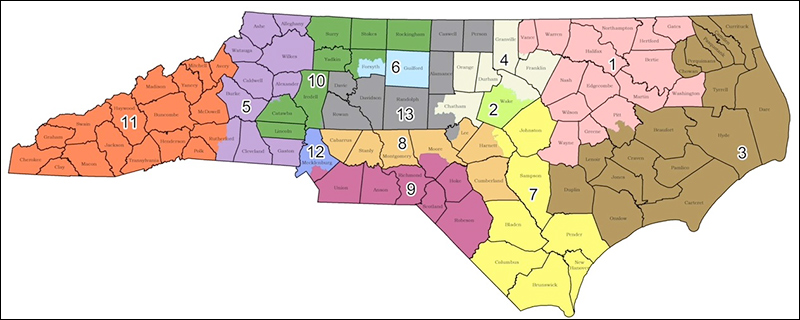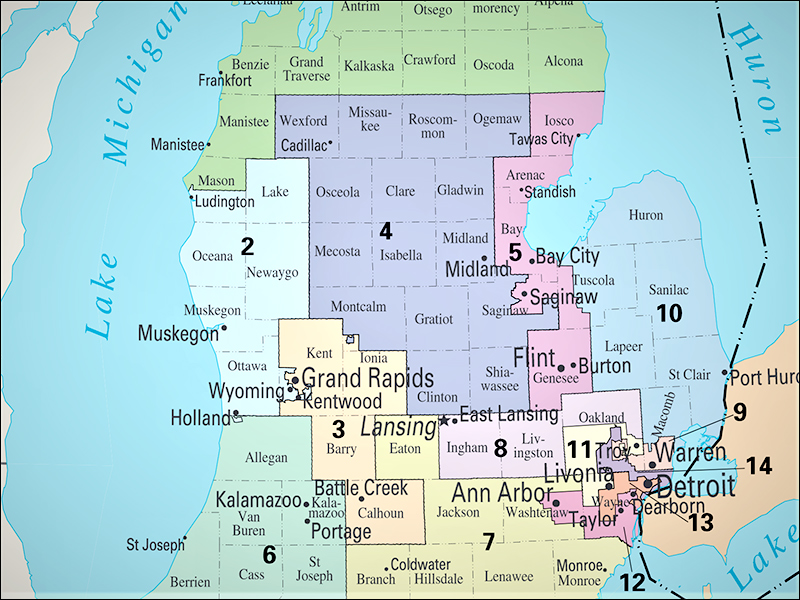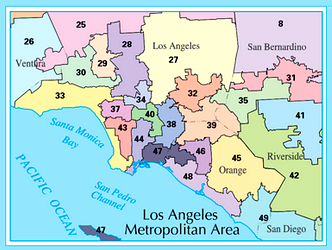-
By Jim Ellis
Aug. 19, 2021 — Based upon the 2019 census estimates, it appeared that the new North Carolina congressional seat was bound for the Charlotte area, but the actual 2020 census figures released late last week may be suggesting a different location.
In looking at the current 13 congressional districts, all but Rep. G.K. Butterfield’s (D-Wilson) 1st District must shed population, hence the reason North Carolina was awarded a new seat. While the census estimates found Rep. Alma Adams’ (D-Charlotte) 12th District being the state’s most over-populated CD, the actual census data finds another district moving beyond the resident number that the Adams’ seat must shed (159,818) in order to reach the state’s target population figure of 745,671 individuals.
The new data find that freshman Rep. Deborah Ross’ (D-Raleigh) 2nd District is the state’s largest, housing 165,703 people over the state’s new per CD quota. Additionally, neighboring Rep. David Price (D-Chapel Hill), whose 4th District also contains part of Raleigh’s Wake County, also must shed a large number (129,692).
Looking at the neighboring districts in the Charlotte area, the 8th and 9th CDs of Reps. Richard Hudson (R-Concord) and Dan Bishop (R-Charlotte), along with one county from Rep. Virginia Foxx’s (R-Banner Elk) western 5th District, means that the Charlotte area’s population surplus is approximately 250,000, while the Raleigh districts are over-populated by a slightly larger approximate figure of 300,000 people.
In the east, the Butterfield district is short just 6,238 people and neighboring Rep. Greg Murphy’s (R-Greenville) 3rd District must shed 10,979 individuals, meaning a relatively simple swap between these two seats and a sliver from a third, most likely Rep. David Rouzer’s (R-Wilmington) 7th District, will easily bring these seats into balance.
The western sector is also relatively well defined. Freshman Rep. Madison Cawthorn’s (R-Hendersonville) 11th District sits in the Tar Heel State’s far western corner. It needs to shed 22,890 people, but can only go one way, east, because this district is bordered on three sides by South Carolina, Georgia, and Tennessee. Therefore, Reps. Cawthorn, Foxx, and Patrick McHenry’s (R-Lake Norman) 10th CD all shedding relatively small population segments to the east should also be a relatively easy population balancing exercise.
This suggests the new seat could be placed in the region between Raleigh and Charlotte, meaning those existing districts that lie between the two metropolitan areas – those of Hudson, Bishop, and Rep. Ted Budd’s (R-Advance) open 13th District, in addition to the severely over-populated seats of Reps. Adams, Ross, and Price – will likely see the greatest change.
This brings us to the Republican-controlled state legislature and how they might draw the new congressional map. In North Carolina, the governor has no veto power over redistricting, so Democratic Gov. Roy Cooper will not be a factor in how the congressional and NC House and Senate maps are constructed. Republicans gained four seats in the state House in 2020 bringing their majority to 69-51. In the state Senate, Democrats added a net one seat thus lessening the GOP majority to 28-22. Therefore, the Republican leadership is in the driver’s seat.






